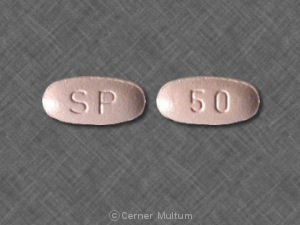What is the most important information I should know about lacosamide?
Do not stop using lacosamide suddenly or you may have increased seizures.
Some young people have thoughts about suicide while taking this medicine. Stay alert to changes in your mood or symptoms. Report any new or worsening symptoms to your doctor.
You may feel faint while taking lacosamide. Call your doctor right away if you have fast or pounding heartbeats, shortness of breath, and sudden dizziness.
What is lacosamide?
Lacosamide is an anti-epileptic drug, also called an anticonvulsant.
Lacosamide is used together with other medications to treat partial-onset seizures in adults and children who are at least 4 years old.
Lacosamide may also be used for purposes not listed in this medication guide.
What should I discuss with my healthcare provider before taking lacosamide?
You should not use lacosamide if you are allergic to it.
To make sure lacosamide is safe for you, tell your doctor if you have ever had:
- heart disease;
- kidney disease;
- liver disease;
- depression, suicidal thoughts or actions;
- drug or alcohol addiction;
- nerve problems caused by diabetes; or
- phenylketonuria/PKU (lacosamide liquid may contain phenylalanine).
Some people have thoughts about suicide while taking lacosamide. Your doctor will need to check your progress at regular visits. Your family or other caregivers should also be alert to changes in your mood or symptoms.
Call your doctor if you have new or worsening depression or suicidal thoughts during the first several months of treatment, or whenever your dose is changed.
Follow your doctor's instructions about taking seizure medication if you are pregnant. Seizure control is very important during pregnancy, and having a seizure could harm both mother and baby. Do not start or stop taking this medicine without your doctor's advice, and tell your doctor right away if you become pregnant.
If you are pregnant, your name may be listed on a pregnancy registry. This is to track the outcome of the pregnancy and to evaluate any effects of lacosamide on the baby.
It is not known whether lacosamide passes into breast milk or if it could harm a nursing baby. You should not breast-feed while using this medicine.
Lacosamide is not approved for use by anyone younger than 4 years old.
How should I take lacosamide?
Follow all directions on your prescription label. Your doctor may occasionally change your dose. Do not take this medicine in larger or smaller amounts or for longer than recommended.
Lacosamide can be taken with or without food.
Measure liquid medicine with a special dose-measuring spoon or medicine cup. If you do not have a dose-measuring device, ask your pharmacist for one.
Contact your doctor if your seizures get worse or you have them more often while taking lacosamide.
Wear a medical alert tag or carry an ID card stating that you take lacosamide. Any medical care provider who treats you should know that you take seizure medication.
Use lacosamide regularly to get the most benefit. Get your prescription refilled before you run out of medicine completely.
Do not stop using lacosamide suddenly, even if you feel fine. Stopping suddenly may cause increased seizures. Follow your doctor's instructions about tapering your dose.
Store at room temperature away from moisture and heat. Do not freeze the liquid form of lacosamide.
Keep track of your medicine. Lacosamide is a drug of abuse and you should be aware if anyone is using your medicine improperly or without a prescription.
What happens if I miss a dose?
Take the missed dose as soon as you remember. Skip the missed dose if it is almost time for your next scheduled dose. Do not take extra medicine to make up the missed dose.
What happens if I overdose?
Seek emergency medical attention or call the Poison Help line at 1-800-222-1222.
What should I avoid while taking lacosamide?
Lacosamide may cause blurred vision or impair your balance, thinking, or reactions. Be careful if you drive or do anything that requires you to be alert and able to see clearly.
What are the possible side effects of lacosamide?
Get emergency medical help if you have signs of an allergic reaction: hives; difficulty breathing; swelling of your face, lips, tongue, or throat.
Seek medical treatment if you have a serious drug reaction that can affect many parts of your body. Symptoms may include: skin rash, fever, swollen glands, flu-like symptoms, muscle aches, severe weakness, unusual bruising, or yellowing of your skin or eyes. This reaction may occur several weeks after you began using lacosamide.
Report any new or worsening symptoms to your doctor, such as: mood or behavior changes, depression, anxiety, panic attacks, trouble sleeping, or if you feel impulsive, irritable, agitated, hostile, aggressive, restless, hyperactive (mentally or physically), or have thoughts about suicide or hurting yourself.
Call your doctor at once if you have:
- a light-headed feeling, like you might pass out;
- shortness of breath; or
- fast, slow, or pounding heartbeats, fluttering in your chest.
Common side effects may include:
- headache, dizziness;
- double vision; or
- nausea.
This is not a complete list of side effects and others may occur. Call your doctor for medical advice about side effects. You may report side effects to FDA at 1 800 FDA 1088.
What other drugs will affect lacosamide?
Other drugs may interact with lacosamide, including prescription and over-the-counter medicines, vitamins, and herbal products. Tell your doctor about all your current medicines and any medicine you start or stop using.
Where can I get more information?
Your pharmacist can provide more information about lacosamide.
Remember, keep this and all other medicines out of the reach of children, never share your medicines with others, and use this medication only for the indication prescribed.
Every effort has been made to ensure that the information provided by Cerner Multum, Inc. ('Multum') is accurate, up-to-date, and complete, but no guarantee is made to that effect. Drug information contained herein may be time sensitive. Multum information has been compiled for use by healthcare practitioners and consumers in the United States and therefore Multum does not warrant that uses outside of the United States are appropriate, unless specifically indicated otherwise. Multum's drug information does not endorse drugs, diagnose patients or recommend therapy. Multum's drug information is an informational resource designed to assist licensed healthcare practitioners in caring for their patients and/or to serve consumers viewing this service as a supplement to, and not a substitute for, the expertise, skill, knowledge and judgment of healthcare practitioners. The absence of a warning for a given drug or drug combination in no way should be construed to indicate that the drug or drug combination is safe, effective or appropriate for any given patient. Multum does not assume any responsibility for any aspect of healthcare administered with the aid of information Multum provides. The information contained herein is not intended to cover all possible uses, directions, precautions, warnings, drug interactions, allergic reactions, or adverse effects. If you have questions about the drugs you are taking, check with your doctor, nurse or pharmacist.
Copyright 1996-2018 Cerner Multum, Inc. Version: 5.01. Revision date: 11/13/2017.

